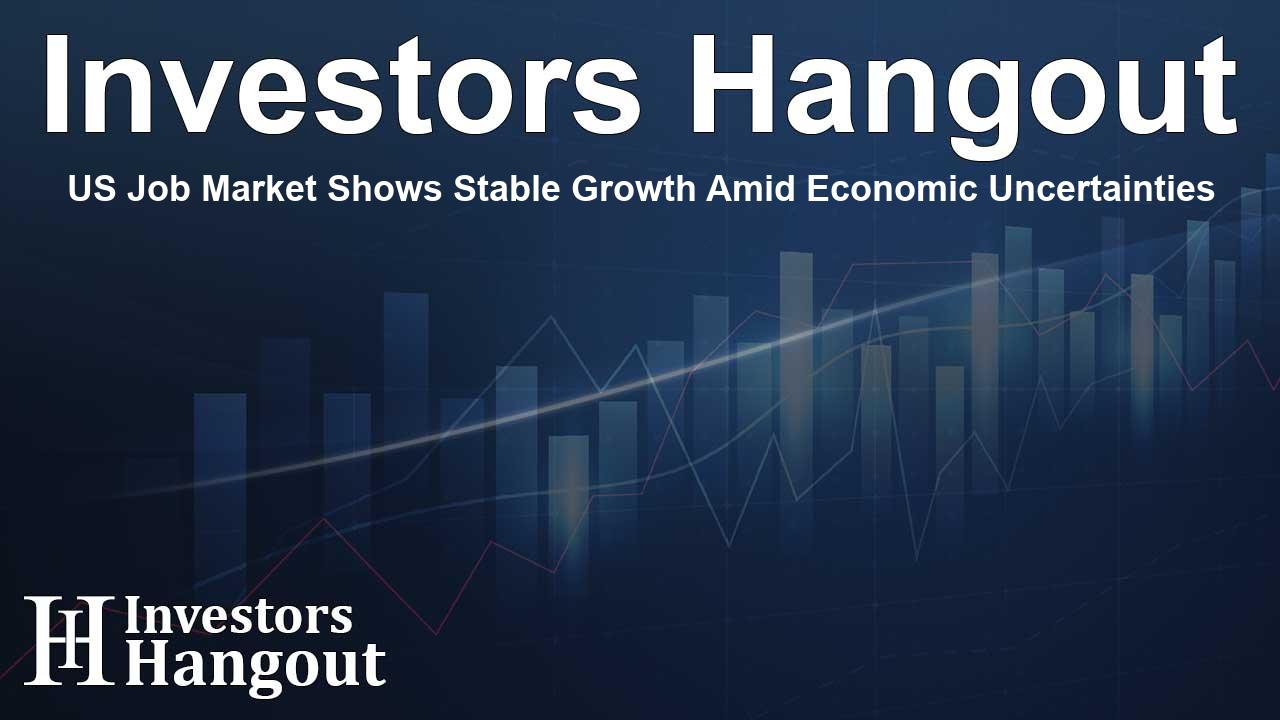US Job Market Shows Stable Growth Amid Economic Uncertainties

Overview of Current US Job Growth Trends
As the year closes, the U.S. job market is demonstrating steady growth, reflecting a consistent pace in hiring and economic activity. Indicators show that job growth likely slowed in the most recent month, yet the job creation pace remains robust, and the unemployment rate has stabilized around 4.2%.
Insights from Economic Analysts
Economists suggest that while hiring may not be experiencing the rapid expansion seen in previous years, the current state is healthy by historical standards. Sevin Yeltekin, a macroeconomist, notes that the labor market's resilience, largely due to low layoff rates, supports consumer spending through increased wages. As the economy shifts into the new year, businesses remain hopeful, relying on a workforce that can adapt and grow under changing economic conditions.
Predicted Job Gains and Sector Performance
Recent forecasts suggest that the economy might have added approximately 160,000 jobs last month, a decrease from previous surges but still indicative of growth following disruptions caused by natural disasters and strikes earlier in the year. Many of these gains were anticipated in stable sectors, particularly healthcare and government, which have shown consistent hiring patterns.
Challenges Facing the Labor Market
Despite these positive signs, there are underlying concerns impacting the job landscape. Presidential policies regarding tariffs and immigration may affect businesses reliant on a diverse workforce. Economic leaders remain cautious, noting that while immediate fears have subsided, the uncertainty surrounding future regulations could hinder job growth moving forward.
Unemployment Rate Trends
Interestingly, the unrounded unemployment rate has shown an upward trend, creeping slightly higher in recent months, which might not reflect the broader narrative of a solid job market. Economists emphasize the importance of monitoring these figures closely, as the rate is near the levels recorded in past months, indicating that potential vulnerabilities could arise if growth begins to slow.
The Role of Federal Reserve Policies
The Federal Reserve's approach towards interest rates and monetary policy is heavily influenced by these labor market trends. The central bank's cautious stance towards further cuts highlights the delicate balance it seeks to maintain amid fluctuating unemployment rates and economic growth projections. Recent discussions among Fed officials suggest a preference for measured adjustments rather than aggressive changes.
Looking Ahead in 2024
As we transition into a new year, the outlook for the labor market hinges on various factors, including government policy shifts and global economic conditions. While businesses remain tentative about hiring largely due to external pressures, there is still optimism regarding job creation, particularly if favorable conditions prevail.
Frequently Asked Questions
What is the current state of job growth in the U.S.?
The U.S. job growth is steady, with estimates suggesting an addition of about 160,000 jobs recently, maintaining a healthy labor market.
How does the unemployment rate impact the economy?
The unemployment rate, currently around 4.2%, reflects the overall health of the economy, influencing consumer spending and business confidence.
What sectors are showing the most job gains?
Recent job gains have primarily been in stable sectors such as healthcare and government, which consistently contribute to employment numbers.
How might government policies affect job growth?
Changes in tariffs and immigration policies can significantly impact businesses' hiring abilities, influencing overall job growth trends.
What are economists predicting for 2024?
Economists remain cautiously optimistic about job growth in 2024, although external factors will play a significant role in shaping the labor market's future.
About The Author
Contact Thomas Cooper privately here. Or send an email with ATTN: Thomas Cooper as the subject to contact@investorshangout.com.
About Investors Hangout
Investors Hangout is a leading online stock forum for financial discussion and learning, offering a wide range of free tools and resources. It draws in traders of all levels, who exchange market knowledge, investigate trading tactics, and keep an eye on industry developments in real time. Featuring financial articles, stock message boards, quotes, charts, company profiles, and live news updates. Through cooperative learning and a wealth of informational resources, it helps users from novices creating their first portfolios to experts honing their techniques. Join Investors Hangout today: https://investorshangout.com/
The content of this article is based on factual, publicly available information and does not represent legal, financial, or investment advice. Investors Hangout does not offer financial advice, and the author is not a licensed financial advisor. Consult a qualified advisor before making any financial or investment decisions based on this article. This article should not be considered advice to purchase, sell, or hold any securities or other investments. If any of the material provided here is inaccurate, please contact us for corrections.
